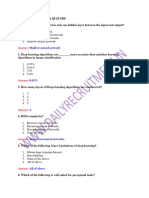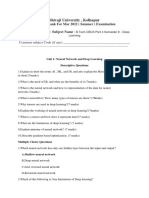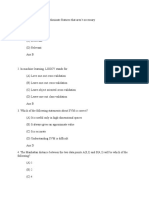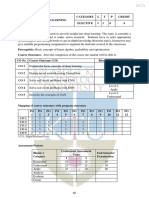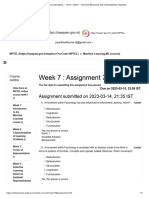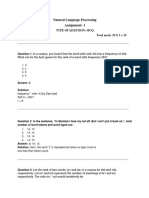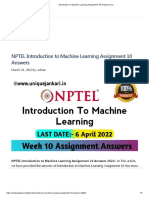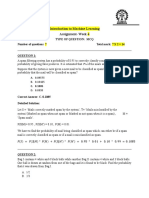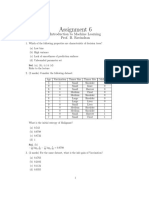100% found this document useful (2 votes)
2K views33 pagesDeep Learning 117 MCQ
The document consists of multiple-choice questions (MCQs) related to deep learning concepts, covering topics such as neural networks, activation functions, loss functions, and various architectures. Key concepts include the purpose of deep learning, the vanishing gradient problem, and techniques like dropout and transfer learning. The document serves as a study guide for understanding fundamental principles and practices in deep learning.
Uploaded by
outstanding749Copyright
© © All Rights Reserved
We take content rights seriously. If you suspect this is your content, claim it here.
Available Formats
Download as PDF, TXT or read online on Scribd
100% found this document useful (2 votes)
2K views33 pagesDeep Learning 117 MCQ
The document consists of multiple-choice questions (MCQs) related to deep learning concepts, covering topics such as neural networks, activation functions, loss functions, and various architectures. Key concepts include the purpose of deep learning, the vanishing gradient problem, and techniques like dropout and transfer learning. The document serves as a study guide for understanding fundamental principles and practices in deep learning.
Uploaded by
outstanding749Copyright
© © All Rights Reserved
We take content rights seriously. If you suspect this is your content, claim it here.
Available Formats
Download as PDF, TXT or read online on Scribd
/ 33

